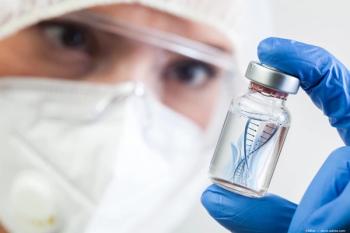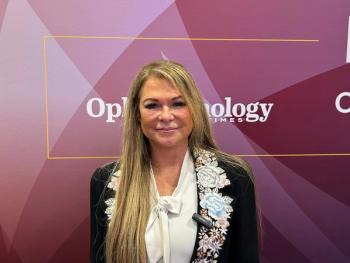
Why TSCPC is surgeon’s choice for advanced glaucoma
One ophthalmologist explains how the search for a less invasive treatment to achieve significant IOP reduction led him to apply transscleral cyclophotocoagulation with a glaucoma device.
Dr. JaffeTake-home
One ophthalmologist explains how the search for a less invasive treatment to achieve significant IOP reduction led him to apply transscleral cyclophotocoagulation with a glaucoma device.
By Emery Jaffe, MD, Special to Ophthalmology Times
As a comprehensive ophthalmologist, I prefer to stay away from traditional glaucoma filtering surgeries-such as trabeculectomy and tube shunts-that bring with them a host of complications and time-consuming, follow-up care.
In South Florida, I discover a sizable percentage of patients who have moderate-severe glaucoma and require treatment. This is complicated by the fact that many glaucoma specialists in this area are close to or already at maximum patient loads, and many patients are unwilling to commit to surgical treatment of glaucoma.
These realities have led to the search for a less invasive treatment to achieve significant IOP reduction in patients. These days, after exhausting conventional office methods of lowering IOP-such as topical medications or selective laser trabeculoplasty (SLT)-I often apply transscleral cyclophotocoagulation (TSCPC) with a glaucoma device (G-Probe, Iridex).
For more than a decade, research has shown TSCPC to be an effective and safe method for the treatment of advanced glaucoma. I have also followed the recent literature on newer techniques that have improved the safety profile.
Douglas E. Gaasterland, MD, introduced a protocol known as the slow coagulation technique, which calls for lower power settings accompanied by longer exposure times. This method helps avoid tissue vaporization, reducing the postoperative inflammatory response.
Steven Vold, MD, has advocated transillumination of the sclera, which highlights the ciliary body for targeting.
I have adopted both of these techniques, as well as made some additional modifications, and have arrived at what I feel is a very safe and effective treatment. (See video)
Redefined protocol
My goal is to have an effective therapy with no complications, so I have a fairly conservative approach toward TSCPC.
I start by using transillumination to visualize the ciliary body and only treat over this region. Transillumination easily highlights the target for treatment. I try to maintain that position posterior to the limbus for the entire treatment.
When I first began performing TSCPC with the slow coagulation treatment aimed closer to the limbus, I experienced numerous pops and a couple of cases resulted in peaked pupils, especially superiorly. These treatments likely killed too many epithelial stem cells and produced severe dry eye that was resistant to treatment.
I am convinced that the combination of the slow coagulation technique with placement of the laser spots farther from the limbus was the modification necessary to eliminate the pain and inflammation that resulted in my earlier treatments.
I currently apply 20 spots with the OcuLight SL Infrared 810-nm laser (Iridex) for my initial treatment. I avoid treating 2 clock hours centered on the nasal and temporal limbus. I apply 10 spots superiorly and 10 spots inferiorly, centered on 12 and 6 o’clock. Each treatment generally begins at 2 watts for 2 seconds, although I adjust for each patient.
More advanced disease gets treated with higher powers and I reduce the energy level if I hear any pops. I believe that treating directly over the ciliary body and further from the iris root allows for the usage of a higher power with less or no audible pops from cellular disruption. I am seeing an average of 40% reduction in IOP with this method.
I also use difluprednate ophthalmic emulsion (Durezol, Alcon Laboratories) before and after the treatment along with a NSAID and one drop of atropine after treatment to address inflammation aggressively. Patients have much less pain and fewer complications, while still achieving a significant drop in IOP.
Case study
An 86 year-old Hispanic male presented for a follow-up exam in March 2012. A general medical history included high blood pressure and adult-onset diabetes mellitus. He also had a long history of primary open-angle glaucoma and poor compliance with glaucoma medication, resulting in a large amount of IOP fluctuation between visits. He underwent cataract surgery in 2011. He was taking combigan BID OU, Azopt BID OU, and Lumigan 0.01% QHS OU.
His visual acuity was 20/20 OD and 20/50 OS, with a strong relative pupillary defect in his left eye. Slit lamp examination revealed posterior chamber lens OU well centered, and dilated fundus examination showed advanced optic atrophy. His visual field test showed good reliability 24-2. His right eye showed severe constriction with small areas of persistence at and below temporal fixation (MD -27dB), and a total loss of all four quadrants including fixation (MD -31dB).
The patient was referred to a local glaucoma specialist who performed a Baerveldt shunt in the left eye, then returned for follow-up in December 2012 after refusing additional glaucoma surgery. He had stopped taking Lumigan and had IOP of 17 mm Hg in his right eye and 23 mm Hg in the left. The tube was open, indenting the iris.
I requested that he start using Lumigan again, and on his return visit, IOP was 21 mm Hg in both eyes.
After a long discussion about the benefits and risks of traditional glaucoma surgeries and diode laser TSCPC, the patient elected to have TSCPC in his left eye.
This was performed with retrobulbar anesthesia. TSCPC was applied with 20 laser spots at 1.25 watts for a 4-second duration, following the slow coagulation treatment parameters. At least 2 clock hours centered on the nasal and temporal limbal zones were avoided. Durezol was instilled before and after the procedure. Atropine 1% and Bromday were added postoperatively.
The patient tolerated the procedure well, and was told to continue his glaucoma drops as well as Durezol on a tapered schedule and Bromday daily. At the 10-day post-operative visit, his exam revealed a decreased tear break-up time, but still no cells or flare. His IOP was 18 mm Hg in the right eye and 13 mm Hg in the left eye. Three months later, his pressures remained constant and he was complaining about poor vision. I discussed his visual field examination and the IOP that was still too high in his right eye. At that point he decided to have TSCPC in the right eye.
The second procedure was similar to the first, except that I moved the laser posterior to the ciliary body shadow seen with transillumination and placed 20 shots with a 2.0 watt power for 2 seconds. (This was after the time that I changed the location of the my laser treatments.)
The patient tolerated the procedure well. The patient had travel plans and was seen at 5 days post-treatment, was free from any pain or discomfort, and IOP was 14 mm Hg in the right eye and 15 mm Hg in the left. Slit lamp examination was free of cells and flare.
The patient was tapered off Durezol over another week. Two months later, the patient’s vision was unchanged, his IOP was 13 mm Hg in the right eye and 12 mm Hg in the left eye. He continues using Combigan, Azopt and Lumigan. He is scheduled for follow-up in 3 months.
Summary
As the population continues to age, the need for effective glaucoma treatments is going to balloon. Though there are a number of minimally invasive glaucoma treatments in various stages of development, most have not shown to provide sufficient IOP lowering for the majority of advanced glaucoma patients.
References
1. Schlote T, Derse M, Rassmann K, Nicaeus T, Dietz K, Thiel HJ. Efficacy and safety of contact transscleral diode laser cyclophotocoagulation for advanced glaucoma. J Glaucoma. 2001;10:294-301.
2. Gaasterland DE. Diode laser cyclophotocoagulation. Technique and results. Glaucoma Today. 2009;7:35-38.
Emery Jaffe, MD
Dr. Jaffe is in private practice at the Jaffe Eye Institute in Delray Beach and Aventura, FL. He is a consultant for Iridex.
Newsletter
Don’t miss out—get Ophthalmology Times updates on the latest clinical advancements and expert interviews, straight to your inbox.



















































.png)


